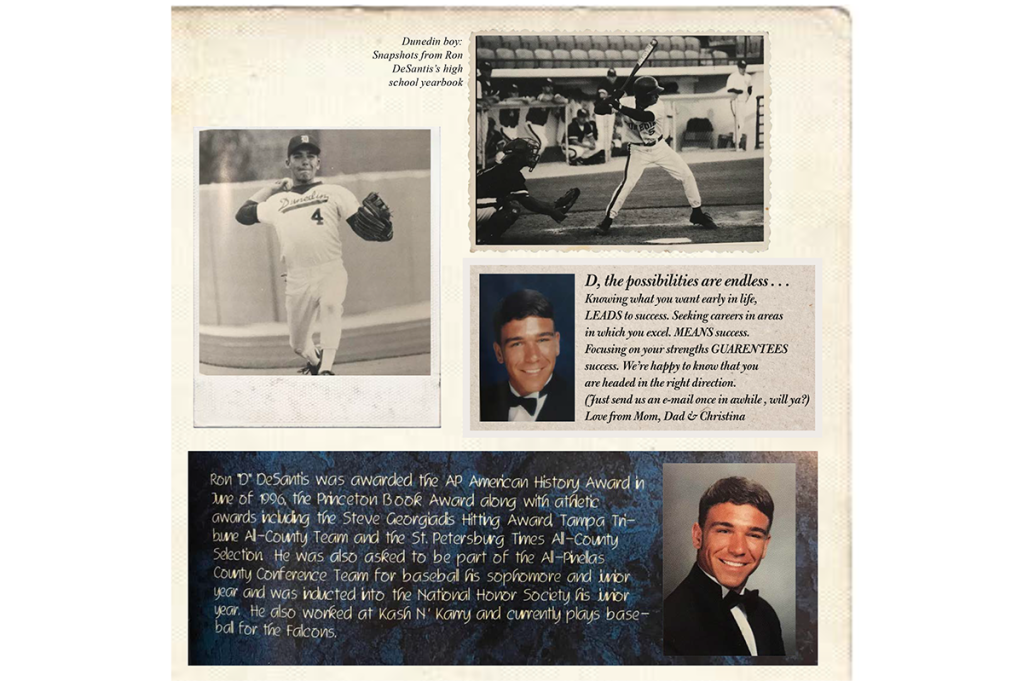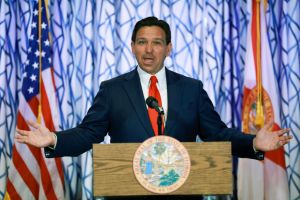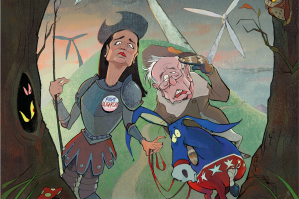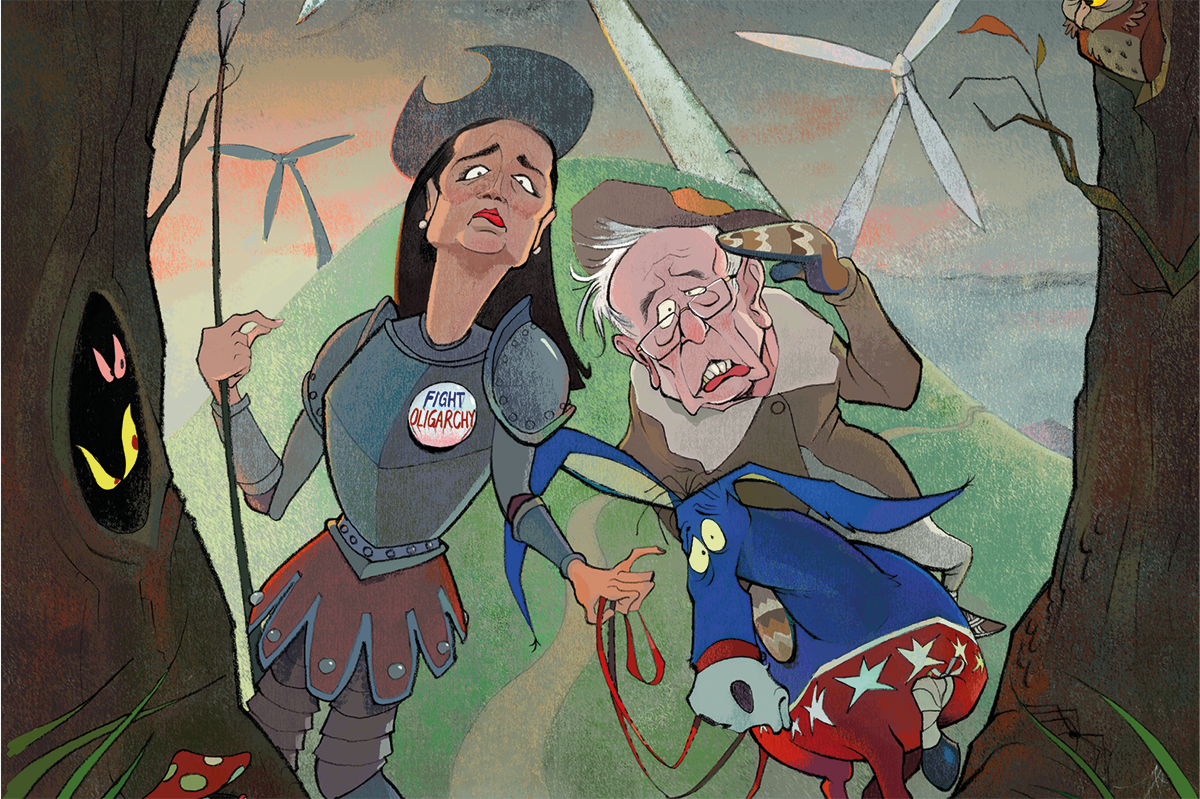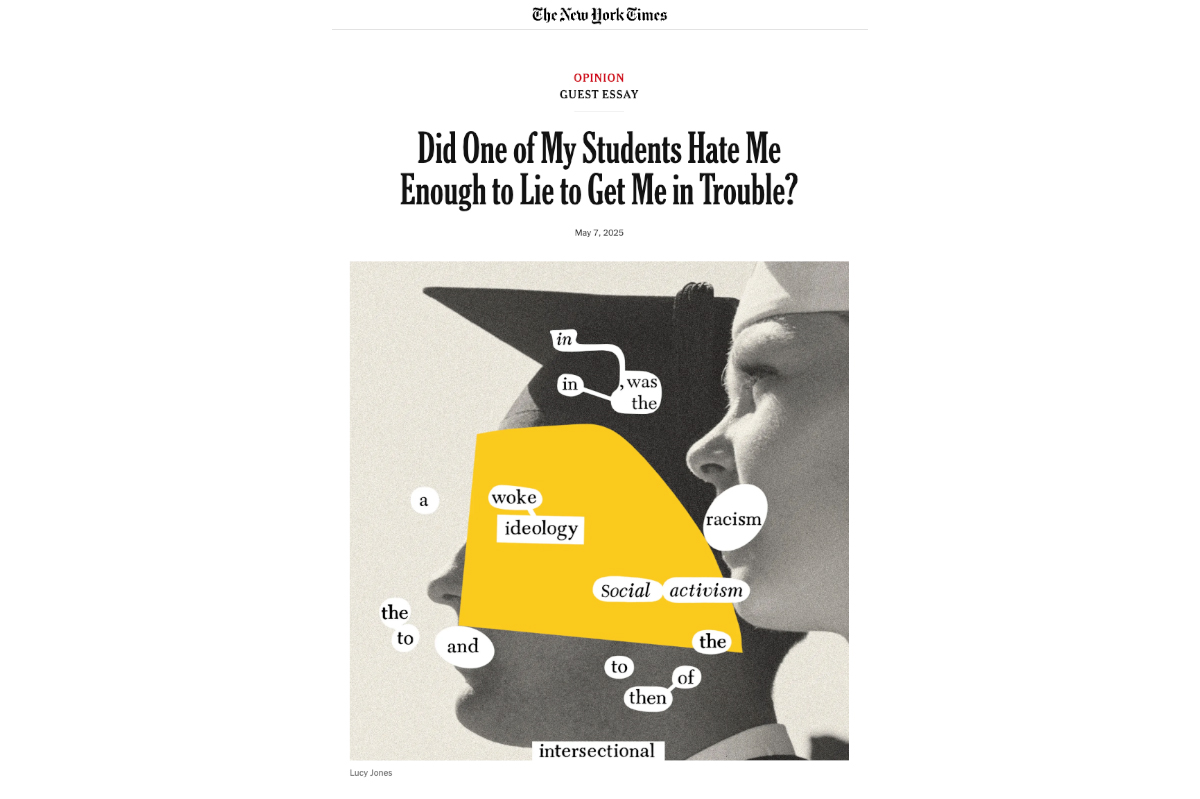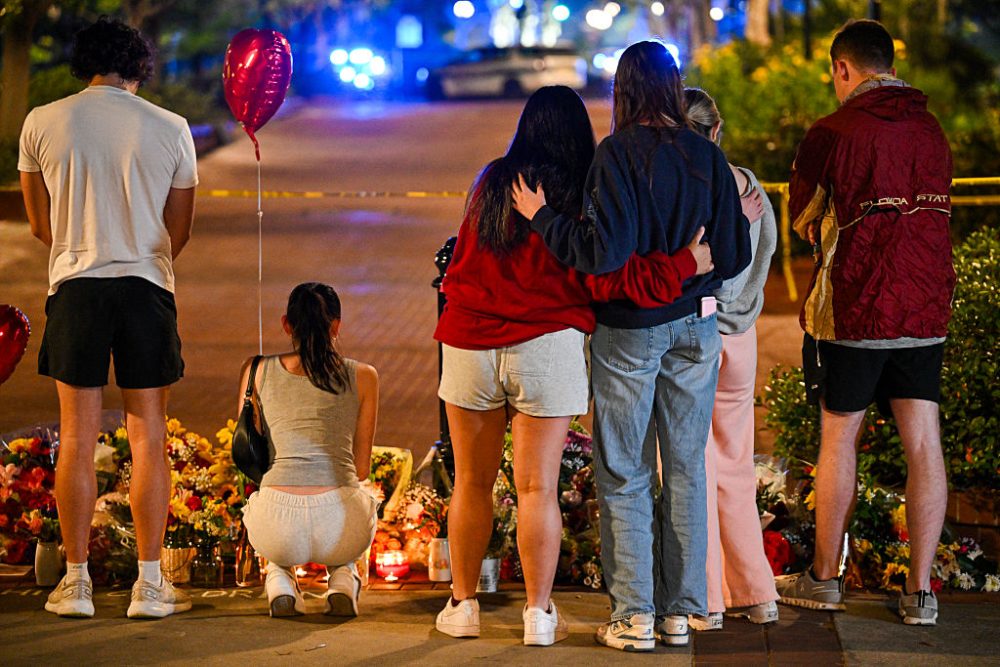Long before he became a darling of the right and the left’s second favorite villain, Ronald Dion DeSantis was just a Florida kid they called “D” who played baseball, worked at a grocery store and dreamed of becoming president of the United States.
Florida’s audacious forty-four-year-old governor earned legions of fans — and plenty of enemies — for keeping his state open during the pandemic. And he’s become a national figure since – a reinvented Florida Man – by playing offense on issues ranging from parental rights in education to illegal immigration to Critical Race Theory to fighting woke corporations. Americans know him as a perpetually-in-the-news flamethrowing politician, but few know much about him beyond the headlines and his résumé, which includes degrees from Yale and Harvard and distinguished service in the military.
To better understand the man who could be our next president, I decided to spend some time in the Tampa suburb where DeSantis spent the bulk of his childhood to see what I could learn. And so, on a glorious Friday morning in late October, I set off for Dunedin with no agenda other than to walk in DeSantis’s footsteps.
Situated on the St. Joseph Sound, Dunedin bills itself as the oldest town between Key West and Cedar Key on Florida’s Gulf Coast. It’s a city of about 35,000 a half hour drive east of Tampa in northern Pinellas County, which narrowly favored Joe Biden in the 2020 election. (Republicans now outnumber Democrats in party registration in the county.) The town was originally named Jonesboro by a late nineteenth-century settler who ran a general store and was later renamed Dunedin, Scots Gaelic for Edinburgh, by a pair of Scottish immigrants who operated a competing store. The town’s roots are still evident: I walked by a Scottish cultural center near Dunedin’s downtown and saw posters advertising the annual Highland Games & Festival, which features pipe bands, dancing, competitions and copious amounts of alcohol.
I meandered along Main Street, walking past cyclists cruising along the Pinellas Bike Trail, and ducked into the town’s history museum, empty save for three volunteers. I learned that Dunedin prospered in the early twentieth century with citrus as its cash crop and thanks to its strategic location between shipping lines that ran from Key West to Cedar Key.
There was no mention of DeSantis in the museum but displays on the malaise that gripped the town in the Seventies and Eighties caught my attention. DeSantis’s father, Ronald Sr., installed Nielsen television ratings boxes, and his mother, Karen, worked as a nurse. When they moved to Dunedin in 1985, shortly after the birth of DeSantis’s late sister, Christina, it wasn’t the tourist magnet it is today. A panel in the museum put it diplomatically when it said that by the 1970s downtown Dunedin “wasn’t the thriving city it once was.” In 1985 the DeSantis family purchased an 1,800-square-foot ranch-style home for $65,000 east of downtown, which the governor’s parents still occupy. Three years later, a community redevelopment agency was formed to revitalize Dunedin’s downtown.
I read about these efforts, which began to pay off in DeSantis’s teenage years, at Dunedin’s public library, which had a very anti-DeSantisland vibe thanks to its librarians, all of whom were masked. I asked one of them, who was also wearing latex gloves, to see the Dunedin High School yearbooks from 1993 to 1997 and she led me to stacks that had nearly every yearbook save for the ones I needed. “Maybe they were removed,” she suggested.
I ate Guinness-braised pulled corned beef “Irish tacos” on the patio nearby at Flanagan’s Irish Pub, where, on St. Patrick’s Day this year, Governor DeSantis took just seven seconds to chug a beer, inspiring a throng of revelers to chant “USA-USA-USA!” (“Not bad for an Italian,” an Irish friend told me at the time.)
Artsy downtown Dunedin has a crunchy vibe; you’re more likely to encounter a Pride flag than a DeSantis sign. But when I drove ten minutes north and then east along Main Street, across a typical suburban landscape of big-box stores and strip malls, I entered DeSantis’s old neighborhood, which is a very different world.
The part of town the governor grew up in is an All-American enclave with narrow canals, attractive landscaping and modest, ranch-style homes built in the 1970s. “Back the blue,” “Trump” and American flags are ubiquitous. As are DeSantis yard signs. This is a working-class neighborhood with plenty of retirees; pride of ownership is evident in almost every home. Lawns are immaculately maintained, and neighbors greet each other in the streets.
When the New Yorker’s Dexter Filkins visited to research a hit piece full of cutting anonymous quotes (but none from neighbors), he claimed there was a Trump sign in the DeSantis yard. When I visited, there wasn’t, just a single DeSantis sign, though their neighbors directly across the street had a Trump 2024 flag in addition to a DeSantis sign. Only a few houses on the street didn’t have a DeSantis sign out front.
I stopped a pair of women out for a walk on a lovely morning, introducing myself as a “conservative writer” fearing they’d tell me to get lost if they thought I was a member of the DeSantis-hating media class. One of the women, Margie, has lived in the neighborhood for decades. “My son played baseball with D,” she said. Her son and DeSantis played on a team that qualified for the Little League World Series in 1991 and was good enough to feature four players who would go on to be drafted. He scored in the ninety-ninth percentile on the SAT and was admitted to Yale, where he was a four-year starter who led the team in batting his senior year. One of his Dunedin teammates, Brady Williams, now the manager of the Durham Bulls, told the Tampa Bay Times in 2020 that he knew “D” was destined to go into politics.
“His goal was to be the president of the United States,” he said. “Was that far-fetched? A lot of things we talked about that summer were far-fetched. And a lot of them happened.’’
A message to DeSantis from his parents in the 1997 Dunedin High School yearbook (which I managed to find eventually) hints that they expected big things from their son.
D, the possibilities are endless…
Knowing what you want early in life, LEADS to success. Seeking careers in areas which you excel MEANS success. Focusing on your strengths, GUARANTEES success. We’re happy to know that you’re headed in the right direction. (Just send us an e-mail once in a while, will ya?)
Love from Mom, Dad and Christina
His yearbook entry noted that he was a standout baseball player, a recipient of the AP American History and the Princeton Book Awards, and an employee of the now-defunct Kash n’ Karry grocery store. Around the corner from the DeSantis home, an elderly man with a veteran’s baseball cap on wished me a good morning; I asked him about a wooden Trump sign he had perched in a tree. “I have to keep it up there because they keep stealing it,” he said before getting in a car with his son. I wondered if it was Trump fans who coveted his signs or Trump haters but didn’t have a chance to ask before they drove off.
When Dexter Filkins turned up unexpectedly at the DeSantis family home, Ron Sr. spoke to him briefly in the driveway. I didn’t want to doorstep the man, so I went home and wrote a letter, enclosing some positive opinion pieces I’d written about DeSantis in the envelope. The DeSantises didn’t respond, so a week later I returned to Dunedin, hoping that my letter might open the door to an interview. My stomach was in knots on the half-hour drive.
I pulled up and rang the doorbell. No one answered for a minute, and I felt a sense of relief. At least I tried, I thought. Then I heard footsteps and the door cracked open but only just enough for me to recognize it was Ron DeSantis Sr., who hadn’t received my letter and had no idea who I was. “I can’t speak to you,” he said, after I explained why I was there. “The media always distorts what you say and takes things out of context.”
I agreed with him and mentioned Filkins’s hit piece. “So why did you talk to Filkins?” I asked.
The elder DeSantis sighed and furrowed his brow. “It was a moment of weakness,” he explained. (In fact, the only quote Ron Sr. gave Filkins that could be considered mildly controversial was his admission that his son was “stubborn,” which isn’t exactly a surprise.) I apologized for showing up at their house, and the governor’s father was gracious, remarking, “You’re just doing your job, no problem.” I wished him and his family well and left.
But just as I was about to get in my car, I heard a woman’s voice call out, “Dave! Dave!” I turned around and saw a woman hobbling across the driveway with a large walking boot on one of her feet. It was Karen DeSantis, the governor’s mother.
She’d heard about me from the principal of Our Lady of Lourdes, the Catholic junior high school Ron attended. “They told me you wanted to talk to one of Ron’s teachers, right?” she asked. I explained who I was and told her that I admired her son and wanted to write about his childhood to give people a better sense of the man behind the policies. She smiled and said that she wished she could help. “We were told to direct all interview requests through the governor’s campaign,” she said.
I spent more time walking the neighborhood and met another neighbor, Darren Roche, a disabled veteran who spoke glowingly of the family. “They are a down-to-earth Dunedin family and they are very humble,” he said. “They keep it hush-hush, they don’t walk around bragging that their kid is the governor.” Roche said that the DeSantis signs are as much a matter of neighborhood solidarity as they are politics. “We all like the family, so having the DeSantis signs in our yards is kind of like supporting them.”
When asked about the homes with Thank You Trump flags and DeSantis yard signs and who those folks would support in the event of a 2024 showdown, Roche said that as a supporter of both he feels conflicted. On the one hand, he said, if DeSantis won, the Secret Service “might show up with a blank check” to buy his house and others on the block. On the other, he said, “I might have to support Trump so we can keep DeSantis here in Florida.”
Roche told me he considered Dunedin to be more liberal than conservative, mentioning that the town has a large LGBT community. “There’s a red Dunedin and a blue Dunedin, two different worlds,” he said.
By the time I got home, there was an email from DeSantis Sr. in my inbox: “We got your letter after all.” The elder DeSantis explained that they’d been up in Tallahassee and a neighbor collected their mail while they were away. He read the articles I sent him and must have looked for more, because he referenced a piece I wrote defending Christopher Columbus and commented, “I like your writing style, conversational and thorough. Sorry I wasn’t much help today… Didn’t want you to think we were lying to you about not receiving your letter. Ron.”
I hoped it was the start of an epistolary bromance and wrote back immediately with a handful of questions. Ron Sr. never responded but it didn’t really matter. A couple of visits to DeSantisland and my brief interactions with his family provided a window into a man who, unlike Trump, seems more comfortable talking about policy than himself. Ronald Dion DeSantis grew up in a neighborhood where people are proud to be Americans, living in an unpretentious house that Zillow thinks is now worth about $50,000 less than the current average home price in the United States. DeSantis has spoken often about his childhood memories of playing baseball in Dunedin but rarely mentions the place outside that context.
Many politicians boast about their working-class roots. (Remember how often John Edwards told us he was the son of a mill worker?) DeSantis doesn’t have to do this because he’s the real deal. He has a net worth of about $300,000 and still has $21,000 in student loans. Unlike Trump, he doesn’t crave the approval of elites, he wears their disdain for him as a badge of courage. When you visit DeSantis’s old neighborhood, you quickly get why he wants rich people on Martha’s Vineyard to host asylum seekers, why he opposes student loan bailouts and why he’s not a fan of “family-friendly” drag queen story hours. We can only guess where Trump’s populist leanings originate, but with Ron DeSantis, you only need to walk the streets of DeSantisland to find out.
This article was originally published in The Spectator’s December 2022 World edition.



